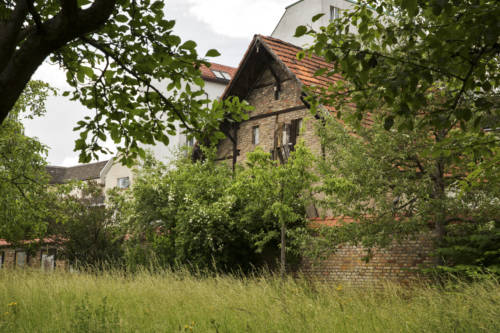
A Quick Look at the Comenius Garden in Downtown Berlin
In one of the most densely-inhabited and loudest sections of downtown Berlin, I recently found myself strolling down Richard Street, where the street fronts, houses and all, gradually become smaller, quieter, and emptier. Here the Bohemian village “Rixdorf” has been preserved as a cultural monument. It was founded in 1773 by Protestant refugees who fled their homes in the Czech Republic to escape the persecution of the Catholic Church. Today, their descendants carry on their legacy in these small houses.
In a gap between two houses I stood in front of a wooden fence and pressed a small, inconspicuous doorbell. I met Henning Vierck and Neele Illner, the Managing Director of Comenius Garden. They welcome me into the seminar house. The culture and faith of their fugitive ancestors has been preserved in Rixdorf to this day. Comenius Garden was designed by the landscape architect Cornelia Müller. It is a philosopher’s garden– a scientifically rigorous and historically accurate reconstruction of Comenius’ view of humanity’s place in the world. (In addition to being a philosopher and theologian, Johann Amos Comenius was also a well-known pedagogue, which is why the Comenius garden is designated as a school garden.)
Comenius’ core belief was that the world was made up of matter, spirit, and light. All matter in the world, along with the world itself, is living. As Henning Vierck explains: “Each stone is thinking– the world is a garden.” Comenius divides life into eight forms, each of which represents for him a school that moves along a “path of life”. In the rose grove, rosebushes grow on hills arranged in long arcs, each exhibiting a different type of rose.
Very rare and old varieties of roses represent Comenius’ first form: the natural. Richly-cultivated varieties represent the second form: the technological. To small children, the shrubs look like a forest of roses. In the morning, the garden belongs only to children—as a temporal shelter. The kindergarteners have their own entrances and beds. At 12:30, the bell knob opens the gate– only for guests who know that it exists. “The bell is a secret and it is not to be betrayed,” says Henning Vierck. Secrecy creates a band of insiders that take especially good care of the garden.












































